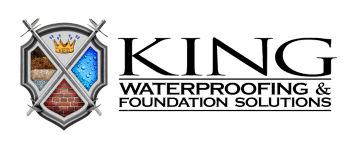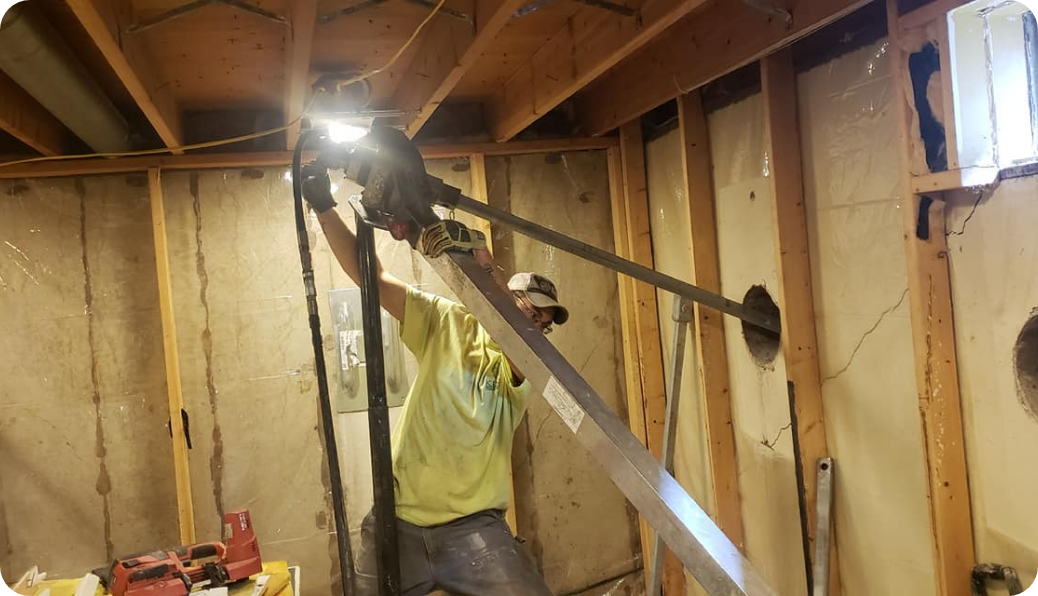Helical piering is a revolutionary foundation repair technique that has gained popularity in recent years. It offers a reliable and cost-effective solution for stabilizing and strengthening foundations that have been compromised by soil settlement or other issues. This innovative method involves the installation of helical piers, which are steel shafts with helical plates that are driven deep into the ground to provide support and stability for structures.
One of the key advantages of helical piering is its versatility. It can be used for both residential and commercial projects, and is suitable for a wide range of soil conditions. Whether it’s a sinking foundation, a cracked wall, or a sagging floor, helical piering can effectively address these problems and prevent further damage. Moreover, the installation process is quick and minimally invasive, causing minimal disruption to the property.
In addition to its practical benefits, helical piering is also a long-lasting solution. The steel piers are designed to withstand the test of time and provide enduring support to the structure. This makes helical piering a cost-effective investment, as it eliminates the need for frequent repairs or extensive foundation reconstruction. With its proven track record and numerous advantages, helical piering has become a go-to solution for many property owners facing foundation issues.
The Basics of Helical Piering
Helical piering is a foundation repair technique that has gained popularity in recent years due to its numerous benefits and advantages. This technique involves the installation of steel shafts with helical plates into the ground to provide support and stability for structures.
Versatile and Suitable for Various Soil Conditions
One of the key advantages of helical piering is its versatility. It can be used for both residential and commercial projects, making it a viable solution for a wide range of structures. Whether it’s a single-family home or a large commercial building, helical piering can effectively stabilize the foundation and prevent further damage.
Another benefit of helical piering is its suitability for various soil conditions. It can be used in areas with clay, sand, or other types of soil without compromising its effectiveness. This makes it a reliable solution for properties located in different geological regions.
Quick and Minimally Invasive Installation Process
The installation process of helical piering is another reason why it’s a preferred choice for many property owners. Compared to other foundation repair methods, helical piering offers a quicker and more efficient solution. The helical plates on the steel shafts allow for easy penetration into the ground, reducing the installation time significantly.
Moreover, helical piering is a minimally invasive technique. The steel shafts are installed deep into the ground without the need for extensive excavation. This means that the disruption to the property is minimized, reducing the inconvenience and potential damage to the landscape or existing structures.
Long-Lasting Solution for Foundation Stability
Helical piering is a long-lasting solution that provides durable foundation support. Once the steel shafts are installed and securely anchored into the ground, they provide permanent stability to the structure. This eliminates the need for frequent repairs or extensive foundation reconstruction, saving both time and money for property owners.
By choosing helical piering as a foundation repair method, property owners can have peace of mind knowing that their structures are supported by a reliable and long-lasting solution. Whether it’s for residential or commercial purposes, helical piering offers a cost-effective and efficient way to maintain the stability and integrity of any building.
How Helical Piering Works
Helical piering is a highly effective technique that provides stability and support to structures with foundation issues. This process involves the installation of steel shafts with helical plates into the ground to create a strong foundation.
Here’s how helical piering works:
- Initial Inspection: Before starting the helical piering process, a thorough inspection of the foundation is conducted. This helps determine the extent of the damage and the appropriate placement of the helical piers.
- Preparation: To begin the installation, the area around the affected foundation is prepared. This includes removing any debris or obstructions and excavating the soil to provide access to the foundation.
- Helical Pier Placement: Once the preparation is complete, the helical piers are placed into the ground. These piers consist of steel shafts with helical plates attached to them. The plates are designed to penetrate the soil and provide resistance against compression and lateral forces.
- Pier Installation: The helical piers are installed using specialized equipment such as hydraulic motors or handheld torque drivers. The piers are driven into the soil until they reach a stable load-bearing stratum. This ensures that the foundation has sufficient support and prevents further movement or settling.
- Bracket Attachment: After the piers are securely installed, steel brackets are attached to the foundation. These brackets serve as a connection point between the foundation and the helical piers, providing additional stability and support.
- Final Adjustment: Once all the helical piers and brackets are in place, the system is carefully adjusted to ensure that the foundation is properly supported and leveled. This step is crucial in achieving a stable and long-lasting solution.
The helical piering process is known for its efficiency and minimal disruption to the property. Unlike traditional foundation repair methods, helical piering requires minimal excavation and can be completed quickly. Additionally, it is a versatile solution that can be used in a variety of soil conditions, making it suitable for both residential and commercial projects.
Overall, helical piering is a reliable and cost-effective method for restoring stability to structures with foundation issues. By understanding the process and benefits of helical piering, property owners can make informed decisions when it comes to foundation repair and maintenance.
Advantages of Helical Piering
Helical piering offers several advantages over traditional foundation repair methods. This innovative technique has gained popularity in recent years due to its efficiency, minimal disruption, and versatility. Here are some of the key advantages of helical piering:
1. Stability and Support: Helical piers provide exceptional stability and support to structures with foundation issues. These piers are installed deep into the soil, reaching stable load-bearing strata. The helical shape of the piers allows for better weight distribution and enhances the overall strength of the foundation.
2. Minimal Disruption: One of the most significant advantages of helical piering is that it requires minimal excavation and disruption compared to other foundation repair methods. Since helical piers are screwed into the ground, there is no need for extensive digging or heavy machinery. This results in less noise, dust, and debris, minimizing disturbance to the surrounding area.
3. Versatility: Helical piering is suitable for various soil conditions, making it a versatile solution for a wide range of projects. Whether it’s sandy soil, clay, or loam, helical piers can be custom-designed to provide effective support and stability. This adaptability makes helical piering suitable for both residential and commercial structures, regardless of their size or complexity.
4. Cost-effective: In addition to its efficiency, helical piering is also a cost-effective solution for foundation repair. By targeting the specific areas of the foundation that require support, helical piering eliminates the need for extensive repairs or replacements. The precise installation process and the long-lasting nature of helical piers result in fewer maintenance costs in the long run.
5. Quick Installation: Helical piering can be completed quickly compared to traditional foundation repair methods. The installation process involves driving the helical piers into the ground using hydraulic equipment, which significantly speeds up the project timeline. This saves both time and money for property owners.
Helical piering’s advantages make it an attractive option for those dealing with foundation issues. Its stability, minimal disruption, versatility, cost-effectiveness, and quick installation make it a reliable and efficient solution for restoring the stability and integrity of structures. With helical piering, property owners can enjoy peace of mind knowing that their foundations are well-supported and protected.
Applications of Helical Piering
Helical piering is a versatile foundation repair technique that offers a range of applications for different types of structures. Whether it’s a residential, commercial, or industrial building, helical piering can provide a reliable and long-lasting solution to address foundation issues.
Here are some of the common applications of helical piering:
- Residential Structures: Helical piering is frequently used in residential projects to repair foundations that have experienced settlement or shifting. It can stabilize homes built on expansive soils or areas prone to sinkholes. This technique is also ideal for addressing foundation issues in older homes that have experienced wear and tear over time.
- Commercial Buildings: Helical piering is widely used in the construction and repair of commercial buildings. It can be employed to stabilize foundations of office buildings, shopping centers, warehouses, and other structures. Helical piers can bear heavy loads and provide exceptional support, ensuring the long-term stability and safety of the building.
- Industrial Facilities: Industrial structures often have unique foundation challenges due to the heavy machinery and equipment they house. Helical piering can effectively address foundation settlement or shifting issues in industrial facilities, preventing further damage and potential safety hazards. It is a cost-effective solution that minimizes downtime during repairs.
- Infrastructure Projects: Helical piering is also commonly used in infrastructure projects such as bridges, highways, and railways. The installation of helical piers can help stabilize the foundation, ensuring the structural integrity and safety of these critical transportation networks. Helical piering is particularly advantageous in areas with challenging soil conditions.
In addition to these applications, helical piering can be used in a variety of other situations where foundation stability is a concern. Its adaptability and effectiveness make it a preferred choice for many construction professionals and engineers.
By employing helical piering, structures can be restored to their original stability, ensuring the safety and functionality of the building or infrastructure for years to come.
Conclusion
Helical piering is a versatile and effective solution for addressing foundation issues and stabilizing structures in various types of projects. Whether it’s a residential, commercial, industrial, or infrastructure project, helical piering offers a reliable and long-lasting solution.
The adaptability of helical piering makes it a preferred choice for construction professionals and engineers. It can be used in challenging soil conditions and can be installed in tight spaces. This makes it a cost-effective option for repairing existing structures or providing a solid foundation for new construction.
By using helical piering, construction professionals can ensure the stability and safety of buildings and infrastructure. It provides a strong foundation that can withstand the test of time and environmental factors. With helical piering, structures can be restored and strengthened, giving peace of mind to both property owners and occupants.
Helical piering is a reliable and effective method for addressing foundation issues and stabilizing structures. Its adaptability, durability, and cost-effectiveness make it a preferred choice for construction professionals and engineers. With helical piering, buildings and infrastructure can be restored and strengthened, ensuring their stability and safety for years to come.



